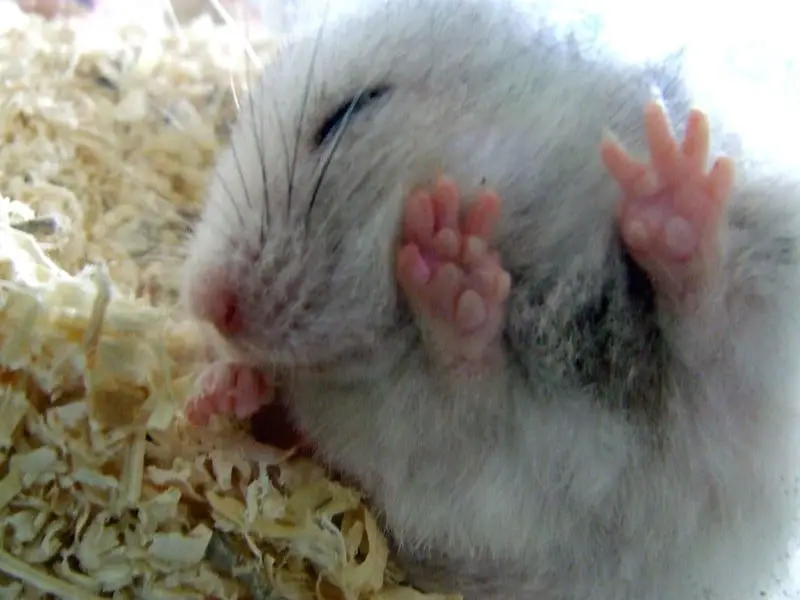Hamsters are popular small pets that are known for their cute appearance and playful nature. However, they also have unique features that make them interesting to study.
One such feature is the bumps that can be found on their feet. In this blog post, we will explore the anatomy of hamster feet and discuss the purpose of these bumps. We will also examine how these features are an adaptation to the hamster’s environment, and provide tips for maintaining their health.

Anatomy of Hamster Feet
Hamster feet are complex structures that are designed for mobility and agility. They have four toes on each paw, with each toe consisting of three bones. The feet are covered in fur, which helps to insulate them and protect them from cold surfaces. The paw pads are also covered in thick skin, which provides protection and helps with grip.
The different parts of the foot each have their own function. The toes are used for gripping and balancing, while the paw pads are used for traction and shock absorption. The muscles and tendons in the feet work together to provide the hamster with the ability to jump, climb and run quickly.
The Purpose of Hamster Foot Bumps
Hamsters have bumps on their feet that are located on the bottom of each paw pad. These bumps are called “digital pads” and they provide extra traction and grip. They are particularly useful for climbing and running on rough or uneven surfaces.
Other animals that have similar digital pads include cats, dogs, and bears. However, the bumps on hamster feet are more pronounced, due to the fact that hamsters have evolved to live in environments with loose soil and sand. The bumps help them to navigate these terrains more easily.
Adaptation to Environment
Hamsters are native to arid regions, such as deserts and steppes. There are several species of hamsters, each with unique adaptations to their specific habitats. For example, the Syrian hamster has large, well-developed feet that are adapted for digging burrows.
The Dwarf Campbell’s Russian Hamster has smaller feet with more pronounced digital pads, which are better suited for running on sand and loose soil.
The bumps on hamster feet are an adaptation to their environment, which has helped them to survive and thrive in their natural habitats. These adaptations are a testament to the incredible diversity of life on earth, and the ways in which animals have evolved to meet the challenges of their environments.
Preventing Injuries and Ensuring Health
As with any pet, it is important to take care of your hamster’s health. This includes maintaining the health of their feet. To prevent injuries, make sure that their cage is free of sharp objects and that they have a solid surface to walk on. Avoid wire-bottomed cages, as they can cause injuries to the feet.
Hamsters can also develop problems with their feet, such as infections and abscesses. If you notice any signs of foot problems, such as swelling or redness, take your hamster to the vet right away. Regular nail trimming can also help to prevent injuries and foot problems.
Conclusion
In conclusion, the bumps on hamster feet are a fascinating feature that serves an important purpose. These bumps help hamsters to navigate their environments with ease, providing extra traction and grip.
By understanding the anatomy and biology of different animals, including hamsters, we can gain a greater appreciation for the incredible diversity of life on earth. By taking care of their feet, we can help to ensure the health and happiness of our small, furry friends.
- How Long Do American Eskimo Dogs Live? Important Factors and Care Tips - September 29, 2023
- Do American Bulldogs Need Grooming? Essential Tips and Care Guidelines - September 29, 2023
- Do Bengal Cats Enjoy Playing? Essential Tips for Keeping Them Active - September 29, 2023